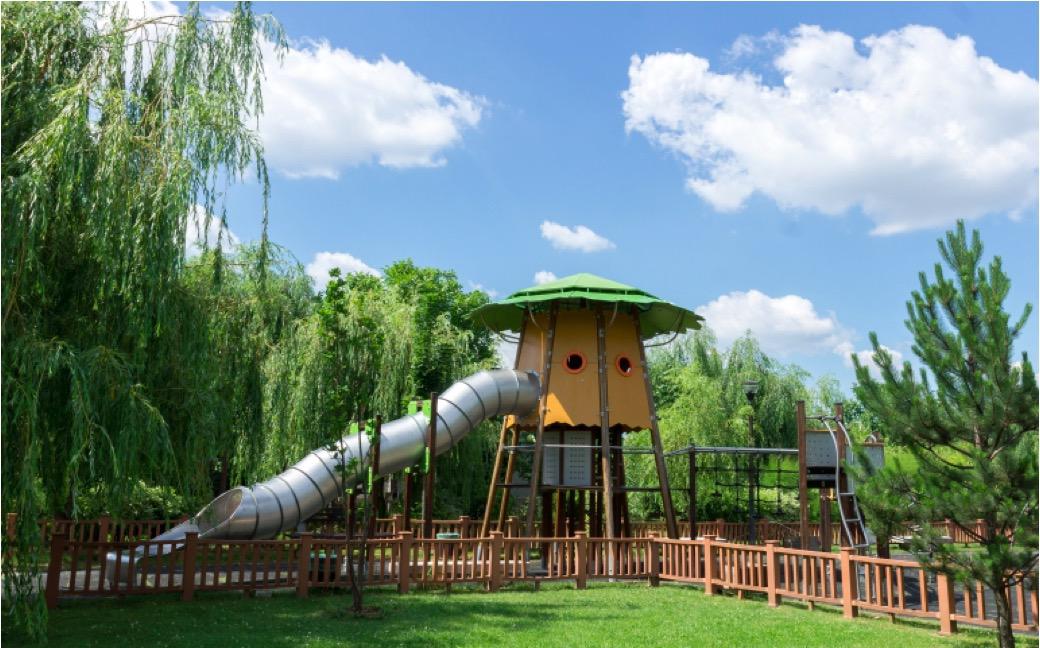PUBLIC UTILITY PARK, BUCHAREST,ROMANIA

PROJECT DESCRIPTION
The creation of a public utility park in the Ion Creanga neighbourhood of Bucharest (RO) was one of the objectives of the 2nd District Integrated Urban Development Plan, financed under the 2007-13 Regional Operational Programme. In line with goals for sustainable growth, the park was designed to integrate the social needs of the community with environmental protection, increase accessibility and mobility, and reduce disparities between the Ion Creanga area and more developed parts of Bucharest.
The project was inaugurated in 2012. The large green space now helps the local community by increasing quality of life, encouraging residents to take part in outdoor activities, and giving a chance for better connections between the Roma community and other residents. As for the area's public image, the park significantly improved the urban infrastructure and quality of the environment, including efficient energy use.
Sustainable development is the organising principle for meeting human development goals at the same time sustaining the ability of natural systems to provide the natural resources and ecosystem services upon which the economy and society depend. The problems the Ion Creanga area was facing before creating the green infrastructure, public utility park were: high percentage of petty crime, lack of facilities for people with disabilities, insufficient green space that contributed to the migration of young population to more developed areas, lack of recreational areas, air pollution, lack of awareness of environmental protection, a large amount of waste. The construction of the park in the Ion Creanga area offers a set of solutions to be implemented by EU member states:
- Making inner-city neighbourhoods more liveable, recreational opportunities for low-income children and families,
- Parks and recreational facilities have been strongly linked to reduced juvenile delinquency,
- Increasing residents' sense of community ownership and stewardship, providing a focus for neighbourhood activities, expose inner-city youth to nature, connect people from diverse cultures,
- Parks and open spaces make compact living attractive and feasible, every tree helps fight global warming by reducing the amount of greenhouse gases, parks and green infrastructure offset the warming effects on cities, making them cooler.
- The park's value is calculated through cleaner air and water that improve public health.
Envisioning
To provide an efficient solution for the problems of the area in an integrated manner, the 2nd District Integrated Urban Development Plan was developed and financed under the Regional Operational Programme 2007-2013. The vision was to work with local people to guide a major change in the way the land is managed and to give the local communities a better future.
A series of measures were being undertaken within this framework in close collaboration with local stakeholders, authorities all working together. To better define and address the solution to the local community the 2nd District City Hall organised a series of debates and public consultations, advertised the project on its website and took all the active measures to integrate the community’s demands in the project.
LESSONS LEARNED / RESULTS
The park's creation had positive impacts in terms of environment, health and community:
- It made the Ion Creanga neighbourhood more liveable; it offered recreational opportunities for at-risk youth, low-income children, and low-income families;
- It increased residents’ sense of community ownership and stewardship, provided a focus for neighbourhood activities, expose inner-city youth to nature, connect people from diverse cultures, improved the interaction and communication with the Roma residents in the
- Provided a high quality environment for the community;
- Provided sustainable and rational management of waste by installing compartmentalised bins to educate the population to collect garbage differently;
- Increased energy efficiency through the automated installation of lighting and irrigation systems;
- Increased outdoor activities in open spaces, connection through sports and games between Roma children and Romanian children;
- Attracted homebuyers and boosted residential property values in the area by as much as 15 percent.
DATA
City information
Population size: Above 1 mPopulation development dynamics within the city administrative limits (at the time of the project): Stable
Population development dynamics of the functional urban area (at the time of the project): No data/not applicable
Website of the city: http://www.pmb.ro/
Project information
Project territorial scale:
NeighbourhoodProject geographical area: Periphery of the city
Project/building proportions: No data/not applicable; Project Area: 1-5 ha
Project main actors: Local (district) Government; Resident association, group, citizens; 0
Project dominant property ownership: Public
Project development stage (at the time of description): Completely finished
Project duration: 6 months to 2 years
Project starting date: 2011-2014



